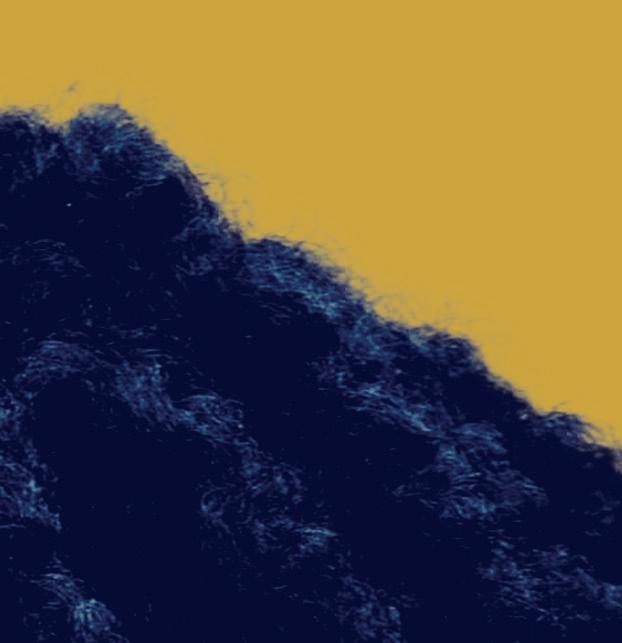
9 minute read
Daphina Misiedjan
DCFA Fellow
© Werry Crone
Advertisement





Realising Environmental Justice
Hotwiring the Law for Rights of Nature
Daphina Misiedjan Legal scholar & environmental justice and human rights expert
Human rights are essential – but what about other living things? Daphina Misiedjan refl ects on her Designing Cities for All Fellowship Realising Environmental Justice and argues for the structural implementation of Rights of Nature. This way, she pleads, we can combat the consequences of colonialism and climate change, respectfully restore Indigenous guardianship and work towards a just world for all.
When people ask me what I mean by environmental justice, I often explain the opposite – environmental injustice – as follows. Imagine yourself in a storm. To protect yourself from this storm, you take the boat that is available to you. You might actually have access to a small yacht. While you are enjoying some drinks safely inside your yacht, you look outside and notice that others in the same storm have different boats. Some are on speed boats, subjected to the wind and rainfall, while others are on even bigger yachts while enjoying a nice dinner. You walk to the other side of your yacht and notice even more people. Some are holding on to rafts, others are drowning. Even though you and all these other people are in the same storm, the experience of this storm differs greatly, depending on the ways people can protect themselves – what they have access to.
The metaphor of this storm can be replaced by environmental problems such as climate change
or pollution. The overall goal is to have options available for those who are unable to protect themselves – especially as those people often have not contributed to the creation of the storm.
The Designing Cities for All programme asked me to reflect further on this concept. I decided to situate the storm at three levels: the local, neighbourhood level, the level of the Dutch Kingdom and the global level. This resulted in three eye-opening conversations, respectively titled The Complexity of Inequality, Climate and the Kingdom and Mobilising International Communities. At the local level, the awareness of health disparities and how much they influence the environment is lacking. However, it is necessary to figure out which interventions are required. At the level of the
Dutch Kingdom it was interesting to discover how challenging it is to make sure that no one is left behind, especially when the distance between decision makers and stakeholders reaches across oceans. And at the global level, we discussed how different communities around the world used international attention to exert pressure on governments, while also using original arguments to sway judges during these challenging times.
Now let’s dive a little deeper into the concept of environmental justice1. In recent decades, this concept and its approach have become increasingly dominant in global discussions around climate change and sustainable development. However, in the Dutch context, environmental justice still requires further studying. Environmental justice is the subject of discussion in different parts of the world and within different disciplines. It first appeared in the United States in the 1970s, following a conflict over dumping waste in North Carolina’s Warren County, where the majority of the population was African American. The civil rights movement took on this case and, through the court, prevented the state from designating this site for dumping soil contaminated with polychlorinated biphenyls (PCB). It was Benjamin Chavis, director of the United Church of Christ (UCC), who first coined the term ‘environmental racism’ in 1982. Shortly after, the UCC study ‘Toxic Wastes and Race in the United States’ was published2 . During the same period, attorney Linda McKeever Bullard and her husband, sociologist Dr. Robert Bullard, also noted the pattern in which communities of colour were more likely to be exposed to pollution3. Dr. Bullard thought that ‘environmental justice’ for vulnerable and disadvantaged communities should be the answer to environmental racism. The first discussions on environmental justice were, therefore, about the fair distribution of benefits and costs with regard to the environment. Since then, these discussions have expanded and the literature and activism no longer deal merely
1 P. Mohai, D. Pellow and J.T. Roberts, ‘Environmental Justice’ (2009) 2 Commission for Racial Justice, ‘Toxic Wastes and Race in the United States’ (1987) 3 S. Rayner & E.L. Malone, ‘Climate Change, Poverty, and Intragenerational Equity: The National Level’ (2001)
with the distribution of risks and benefits of environmental exploitation, but also procedural aspects, the prevention of environmental damage, and ecological justice, the latter of which focuses on creating a more equitable relationship between humans and Nature and is reflected in the Rights of Nature movement.
Rights of Nature is an increasingly developing and expanding field of law. This legal field recognises that Nature and natural phenomena like rivers, mountains and forests have entitlements, just like humans. These are rights, such as the rights to be restored and protected. And these rights can be enforced through the courts. The recognition of these rights in almost twenty countries4, touching almost all continents, is the result of a continuous struggle by local, often Indigenous communities.5 They resisted exploitative relationships with Nature based on their own cosmologies and right to selfdetermination. These communities want to continue the relationship with Nature that has been passed down to them through generations and was interrupted by colonial powers. Rights of Nature can be seen as a way to redesign the law – changing from how law only saw Nature as an object to be exploited to, now, a subject of rights.
This approach changes the legal context in three different ways. Firstly, in this approach, Nature is not only seen as a human property or object, but also has fundamental rights of its own, such as the right to exist and thrive and the right to recovery. Secondly, this approach generally assigns legal status to Nature – which means that Nature’s rights can be defended in court, often by Nature ‘itself’ (through a human voice). Finally, this approach creates the obligation for people to act as guardians or stewards of Nature.
Examples of Rights of Nature can be found in different contexts. In 2008, Ecuador was the first country worldwide to amend its constitution to include the Rights of Nature. Article 10 of its Constitution has since stated that in addition to individuals and communities (Peoples), Nature also has rights. Chapter 7 of the Constitution elaborates on this and states, among other things, that Nature has the right to be restored and that the state takes precautionary and restrictive measures in all activities that could lead to the extinction of species, the destruction of ecosystems or the permanent change of natural cycles. From 2011, a series of lawsuits related to these constitutional provisions followed. For example, the river Vilcabamba was a plaintiff in a lawsuit about a highway construction project that disrupted the river’s natural flow and health.6 This project, which had been going on for three years and for which no environmental impact assessment had been carried out beforehand, directly violated the rights of the river by widening the river flow, with the risk of causing major flooding that could harm the communities along the river and Nature. In this case, the court ruled that the project had to be stopped. The river had thus been able to defend its own rights – to exist and to be maintained.
4 See www.garn.org/rights-of-nature-map for an up-to-date overview of activities in the Right of Nature movement. 5 E.O. Donnell and others, ‘Stop Burying the Lede: The Essential Role of Indigenous Law(s) in Creating Rights of Nature’ (2020) 6 Grant Wilson and Darlene May Lee, ‘Rights of Rivers Enter the Mainstream’ (2019)
In 2012, Bolivia passed the first of two national Rights of Nature laws: the law for ‘Mother Earth and Integral Development for Well-Being’. Not only does this law recognise the rights of Mother Earth, but it also offers an alternative perspective on sustainable development. Colombia joined the movement in 2016, when the Constitutional Court ruled that the Atrato River has the right to be protected, conserved, maintained and restored. In doing so, the Court established guardianship of the river, which is shared with Indigenous and Afro-Colombian communities along with the national government.7
The following year, New Zealand’s Whanganui River was granted legal status through legislation. The river changed from state property to a legal entity. This form of legal personality is an approximation of the Maori worldview that the river should be seen as a family member, an
7 Lidia Cano Pecharroman, ‘Rights of Nature: Rivers That Can Stand in Court’ (2018) 8 Abigail Hutchison, ‘The Whanganui River As a Legal Person’ (2014); Christopher Rodgers, ‘A New Approach to Protecting Ecosystems: The Te Awa Tupua (Whanganui River Claims Settlement) Act 2017’ (2017)
ancestor. The regulations state that the river has the rights, powers, duties and liabilities of a legal person. And the law states that the interests of the river are looked after by ‘Te Pou Tupua’ (the guardians or human face of the river). One guardian has been appointed by the Crown; the other by the Whanganui Iwi, the Maori community connected to the river. The guardians perceive the interests of the river. In doing so, they are guided by a list of values and principles (‘Tupua te Kawa’).8
These examples demonstrate the potential of campaigns for Rights of Nature which span significant periods of time and take place across the globe. In the case of New Zealand, Maori have fought for four hundred years to have their perspective included. Some consider the adopted law a reconciliation between the Crown and the Maori communities. Rights of Nature is, therefore, not only an instrument to empower the environment – it also empowers marginalised (Indigenous) communities. The local developments have built momentum and political and legal credibility. They helped formulate legal norms and motivate social movements to find collective and local solutions to global problems. CURIOUS FOR MORE?
In her DCFA Fellowship Realising Environmental Justice, Daphina Misiedjan takes us on her mission to (re)think the way people and the environment are related.
PODCAST: PAKHUIS DE ZWIJGER Daphina Misiedjan talks about her experience as a legal researcher, the right to life, the right to water, legal personhood and (re)designing human rights for all.
BOOK: THERE’S SOMETHING IN THE WATER
An expose of the environmental injustices practised by the government of Nova Scotia against its marginalised communities.










